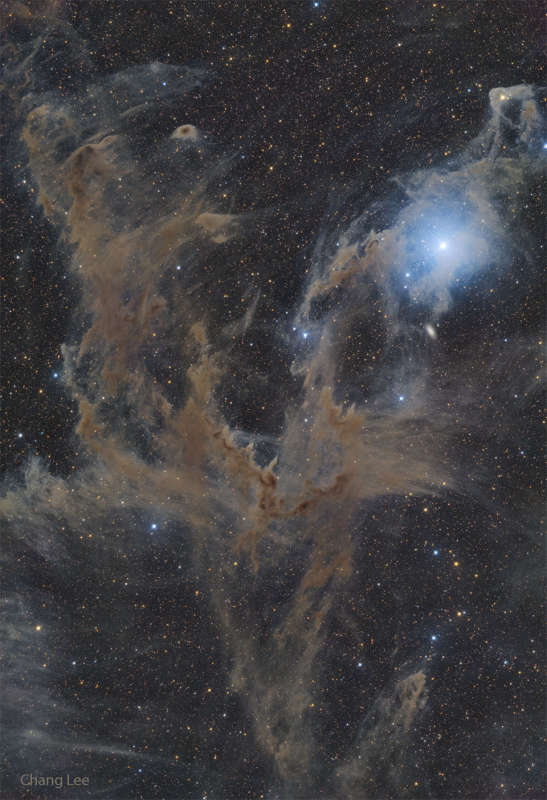
|
Credit & Copyright: Chang Lee
Explanation:
Sometimes the dark dust of interstellar space has an angular elegance.
Such is the case toward the far-south
constellation of Chamaeleon.
Normally too faint to see, dark dust is best known for
blocking visible light from stars and galaxies behind it.
In this 36.6-hour exposure, however,
the dust is seen mostly in light of its own,
with its strong red and near-infrared
colors creating a brown hue.
Contrastingly blue, the bright star
Beta Chamaeleontis
is visible on the upper right, with the dust that surrounds it preferentially reflecting
blue light from its primarily blue-white color.
All of the pictured stars and dust occur in our own
Milky Way Galaxy with one
notable
exception: the white spot just
below Beta Chamaeleontis is the galaxy
IC 3104 which lies far in the distance.
Interstellar dust is mostly created in the cool atmospheres of
giant stars
and dispersed into space by stellar light,
stellar winds, and
stellar explosions such as
supernovas.
|
January February March April May June July August September October November December |
| ||||||||||||||||||||||||||||||||||||||||||||||||
NASA Web Site Statements, Warnings, and Disclaimers
NASA Official: Jay Norris. Specific rights apply.
A service of: LHEA at NASA / GSFC
& Michigan Tech. U.
Based on Astronomy Picture
Of the Day
Publications with keywords: dark nebula
Publications with words: dark nebula
See also:
